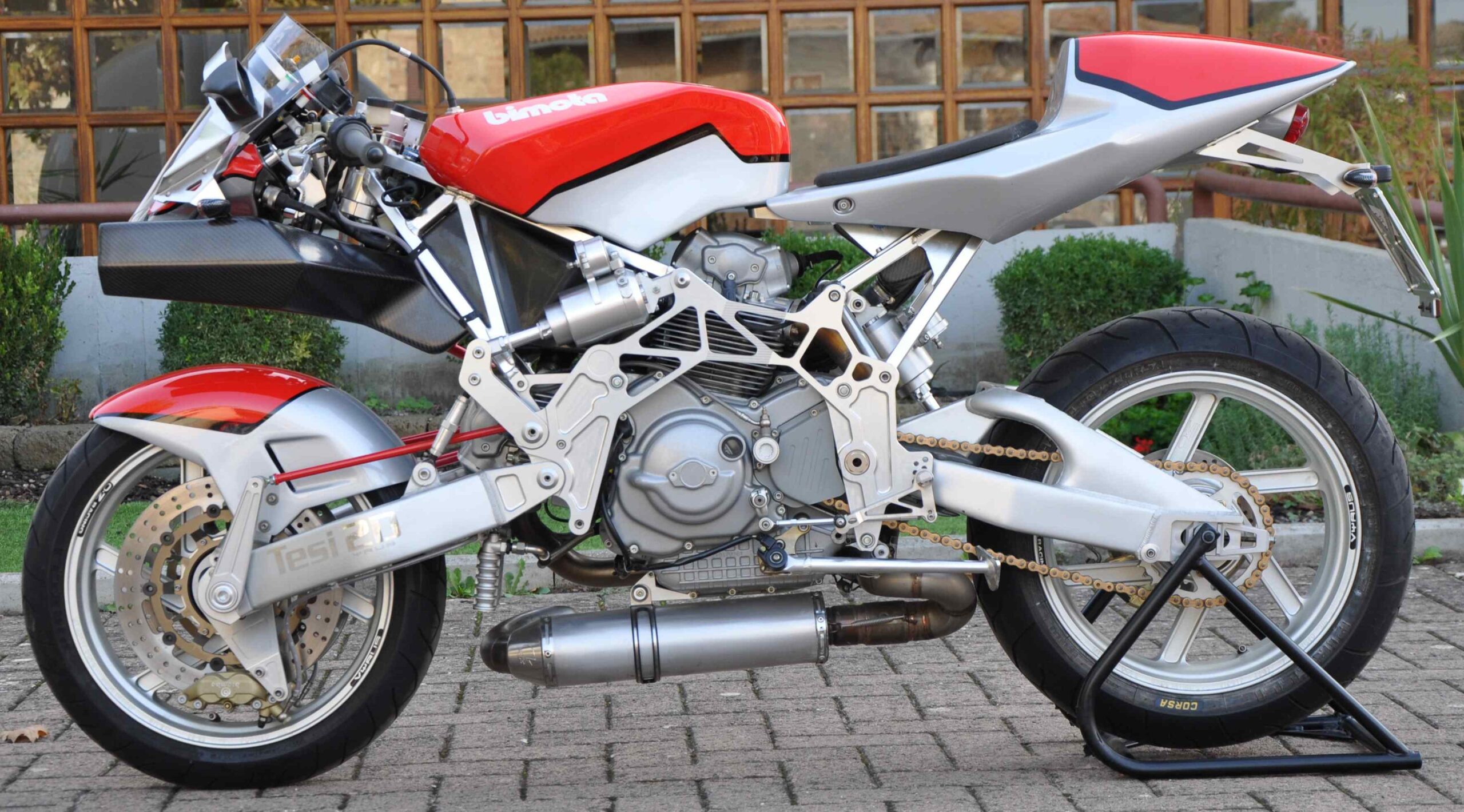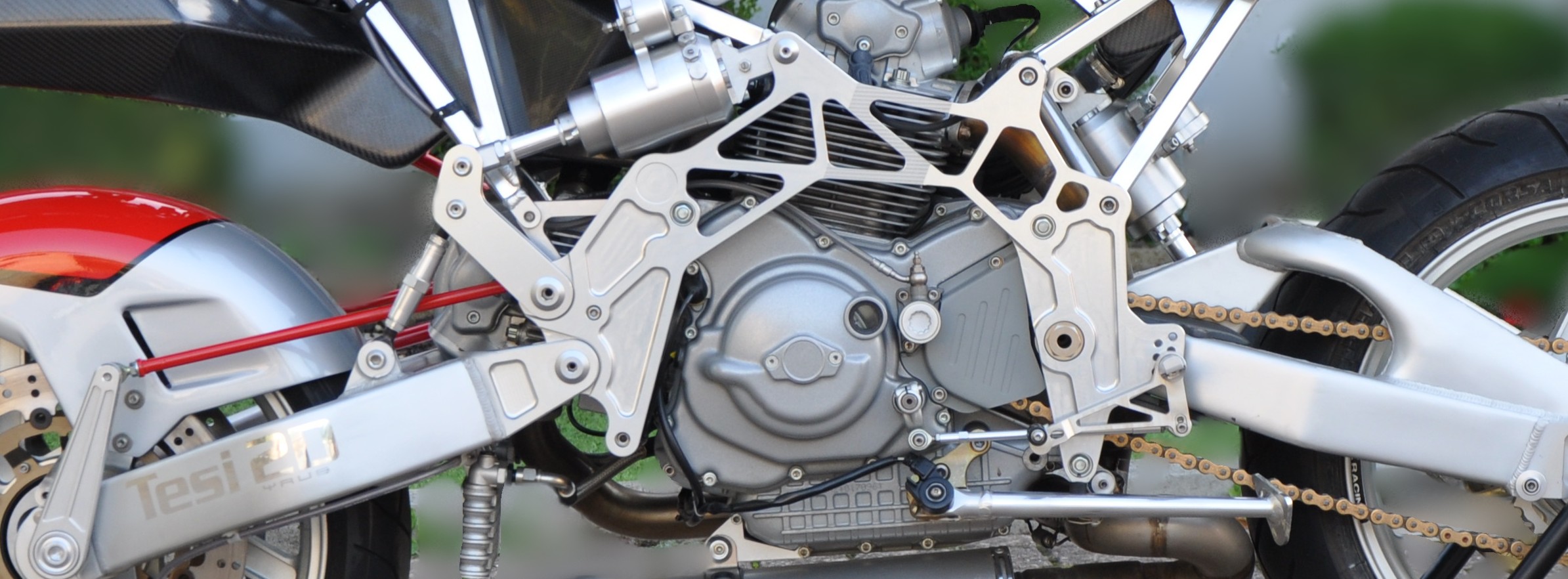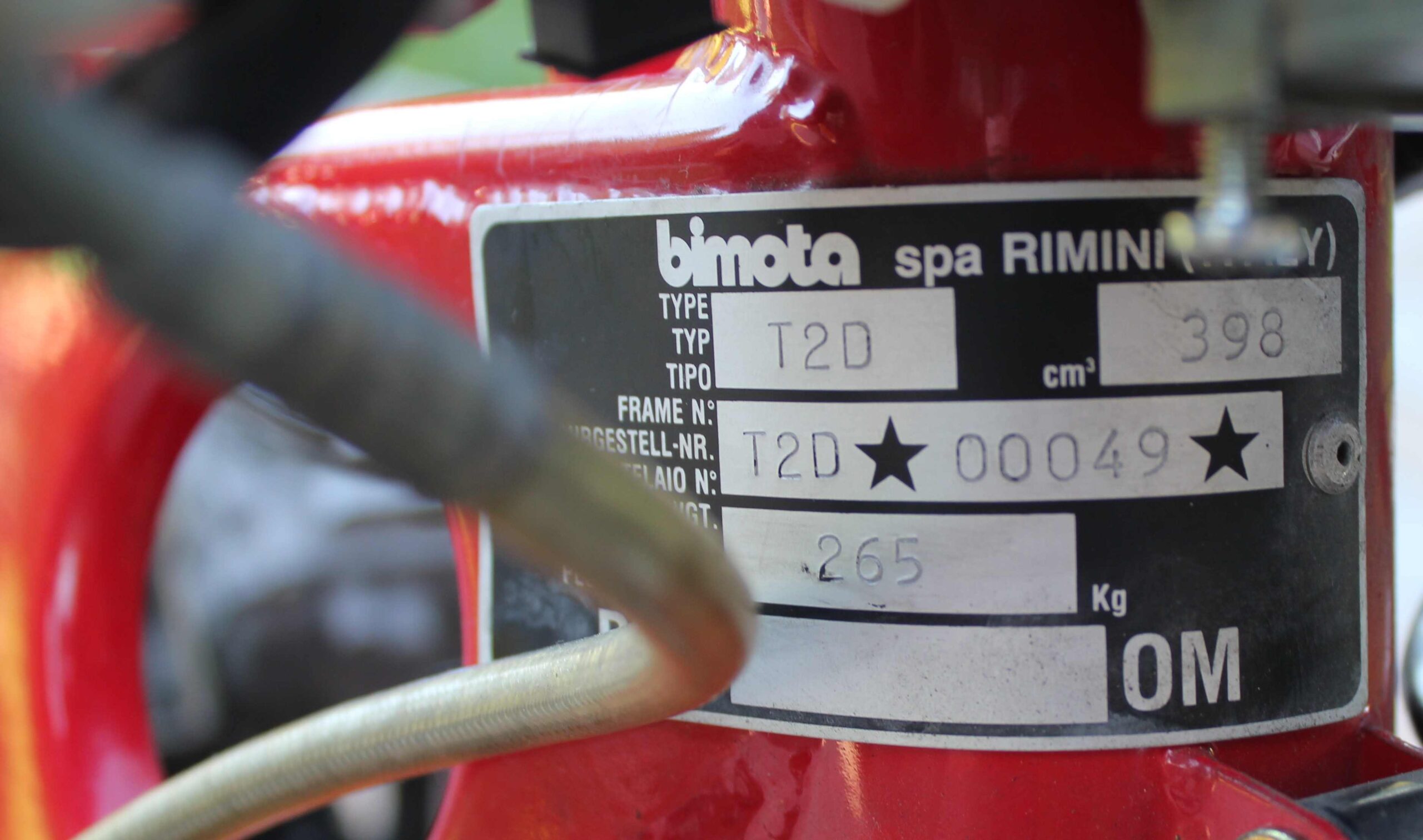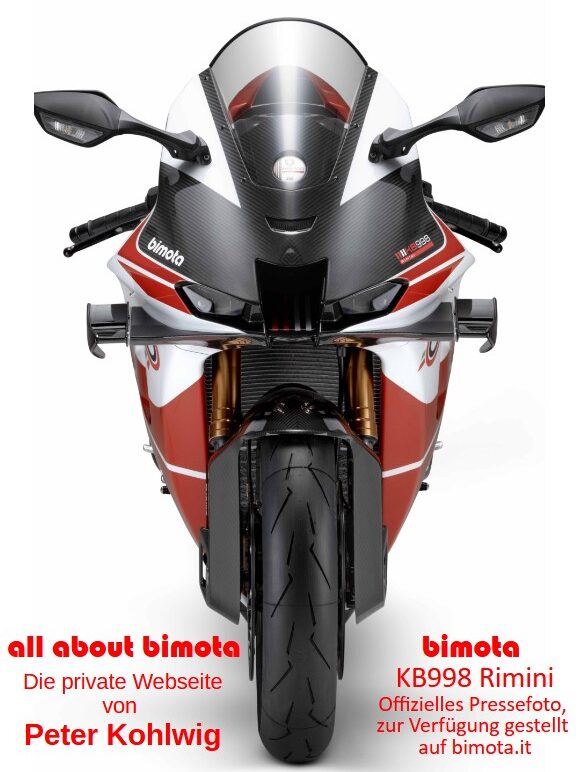
| Designer | Ascanio Rodorigo | Premiere | |
| Produktion period | 2004 – 2006 | Production number | 25 |
| Power | 63 KW (86 PS) | Displacement | 992 ccm |
| Topspeed | 230 km/h | Weight | wet 149 kg dry 139 kg |
| Price | 39.800 Euro (2005) | Colours | white / red |
| Technical basis | Ducati Monster 1000 |
With the Tesi 2D, Bimota introduces a motorcycle with hub-center steering nearly ten years after the production of the Tesi 1D ended. However, it is neither a new design nor developed by Bimota. The Tesi 2D was created by Ascanio Rodorigo, a former Bimota employee, in his company VDM (Vyrus Divisione Motori), founded in 2001. After Bimota’s bankruptcy, VDM acquired the available rights to the hub-center steering system. This extraordinary motorcycle was already presented in 2003 as the Vyrus 984.
The unfaired Tesi 2D adopts the structural concept of the Tesi 1D. The frame – or rather, the two side-mounted, milled aluminum plates—is significantly more delicate in design. They continue to serve as the connection points for the subframes supporting the rear frame, the steering head, and both swingarms. The front suspension is pneumatically operated and controlled via a rocker arm. The rear swingarm, featuring an upper brace, is directly linked to the central shock absorber. Both suspension components are supplied by the Italian manufacturer FG Gubellini.

The powertrain also comes from Ducati. The engine, known since 2003 from the Monster 1000, is a newly designed two-valve Desmodue engine. Compared to its 904cc predecessor, the displacement increases to 992cc. With new cylinder heads featuring a steeper valve angle, dual ignition, and higher compression, power output rises from 57 kW to 62 kW, while maximum torque increases from 76 Nm to 84 Nm. For the Tesi 2D, Bimota specifies an output of 86 hp.
A new and remarkable feature is the exhaust system. The two header pipes merge beneath the swingarm pivot into a collector. A single pipe directs the exhaust gases from the rear into a muffler mounted under the engine, which releases them at the front.
The Tesi 2D showcases an abundance of technology and meticulous craftsmanship in every detail. From the carbon fiber air intakes to the cutouts in the frame, the lightweight six-spoke forged aluminum wheels from OZ Racing, and even the license plate holder and carbon fiber tail section—everything is designed for lightweight construction. Weighing in at less than 150 kg fully fueled, it is an impressive feat for a 1000cc motorcycle.
In a test ride report published by German magazine Motorrad on November 4, 2004, the author describes his initial positive impression:
„At first glance, it is clear that the naked Tesi 2D has little in common with the first fully faired variant that Bimota introduced in the early ’90s. Nevertheless, this latest version once again embodies the original philosophy of the Italian boutique manufacturer. Bimotas are meant to evoke emotions through a combination of technological avant-garde and carefully selected high-tech materials—something that only objects crafted with extreme dedication and precision can achieve. With its provocative styling and distinctive front swingarm design, the Tesi 2D commands immediate attention even when standing still.“
However, opinions on the front suspension with its double swingarm and hub-center steering are divided when tested on the racetrack:
„At Mugello, the braking zone after the crest separates the wheat from the chaff. Those who lack a very stable chassis for the brutal deceleration required there – downshifting from sixth to first gear – must brake early enough to turn in on time. A discipline that the Tesi should master effortlessly, as the Italians promise exceptional stability due to the complex hub-center steering system and robust front swingarm.
In theory, at least. But on the racetrack, theory and practice diverge significantly. While the Tesi handles braking zones with excellence, the high technical effort involved does not come without drawbacks. The Bimota remains impressively stable under braking, effectively minimizing dive, yet the front wheel does not provide sufficient feedback about the road surface or the limit of grip. This is a downside that BMW’s Telelever system also struggles with. When leaning into corners with the brakes applied, a true sense of confidence does not fully emerge, even though the double-system air shock at the front responds sensitively.
The same applies to rapid direction changes in Mugello’s flowing S-curves. Although the 149 kg machine can be flicked from side to side with ease, the front-end feel remains somewhat vague and does not inspire complete trust. The cause could be the two control rods and their bearings, which transmit the steering movements. The disadvantage of this design is the numerous pivot points, whose play and friction somewhat dilute the feedback.“
Ultimately, the Tesi 2D is not truly a Bimota and arguably should not bear the model name. However, it is an absolute rarity, boasting an extremely unique design, minimal weight, and complex engineering. And what is wrong with the model name? Bimota had already used it in the early 1990s. The 50 units of the Tesi 1D models, produced in 1992 and 1993 with the 400cc Ducati Pantah engine for the Japanese market, were marketed under the name Tesi 1D J 400, but their type plates were labeled 2D.


